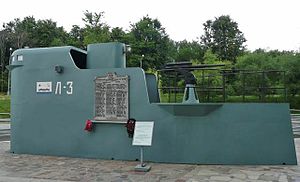A Brief History
On April 16, 1945, a Soviet submarine sunk a transport ship filled with civilians and wounded soldiers, one of the great tragedies in a war filled with great tragedies.
Digging Deeper
The Soviet submarine L-3, while on a mission of laying mines around German held ports in the Baltic Sea, spotted a large easy target.
MV Goya, a freighter stolen from Norway by the Germans and converted to a transport ship for people, was about 475 feet long, 57 feet wide, and displaced about 5230 tons, an average sized ship of its day, about the size of an American Liberty ship. On the fateful day she was carrying about 7000 passengers, German civilians and wounded German soldiers being transported away from advancing Soviet troops to Western Germany.

The Soviet captain picked the Goya as his target out of a small convoy of ships heading west. One torpedo was enough, and the Goya went under in less than seven minutes! Built as a freighter but jam packed with people in every available space, the Goya was not equipped for surviving a disaster as a true passenger ship would have been. Of the 7000 people aboard, only 183 were rescued, the rest either going down inside the ship or freezing and drowning in the cold water.
The exact number of passengers and fatalities is not known, but over 6100 people were documented and many more were probably aboard, perhaps as many as 8000. Being sunk in the middle of the night probably did not help finding survivors before they died of hypothermia.
In a piece of bitter irony, the Goya had previously been used as a target ship for torpedo practice (of course with non-exploding torpedoes!) by the Germans. Also, the war only had a couple of weeks to go when the sinking occurred, another useless tragedy of the war. Question for students (and subscribers): Did you know, you could visit the conning tower of the submarine L-3 in Moscow? Please let us know in the comments section below this article.

If you liked this article and would like to receive notification of new articles, please feel welcome to subscribe to History and Headlines by liking us on Facebook and becoming one of our patrons!
Your readership is much appreciated!
Historical Evidence
For more on Soviet submarine warfare during World War II, please see…
Korzh, Viktor. Red Star Under the Baltic: A Soviet Submariner in World War II (Stackpole Military History Series). Stackpole Books, 2009.
The featured image in this article, a photograph of MV Goya in Aker Shipyard in Oslo, 1940, is in the public domain in Norway, because the Norwegian Copyright law (§43a) specifies that images not considered to be “works of art” become public domain 50 years after creation, provided that more than 15 years have passed since the photographer’s death or the photographer is unknown. Under the former photo law, protection ended 25 years after creation, provided that more than 15 years had passed since the photographer’s death or the photographer is unknown. The image is in the public domain if this older term already had expired as of 29 June 1995.

